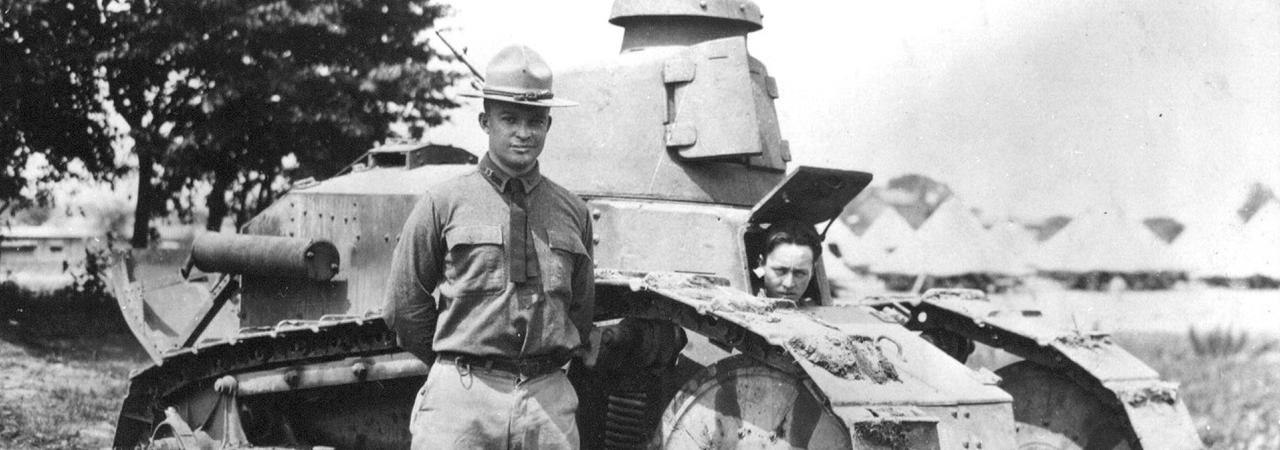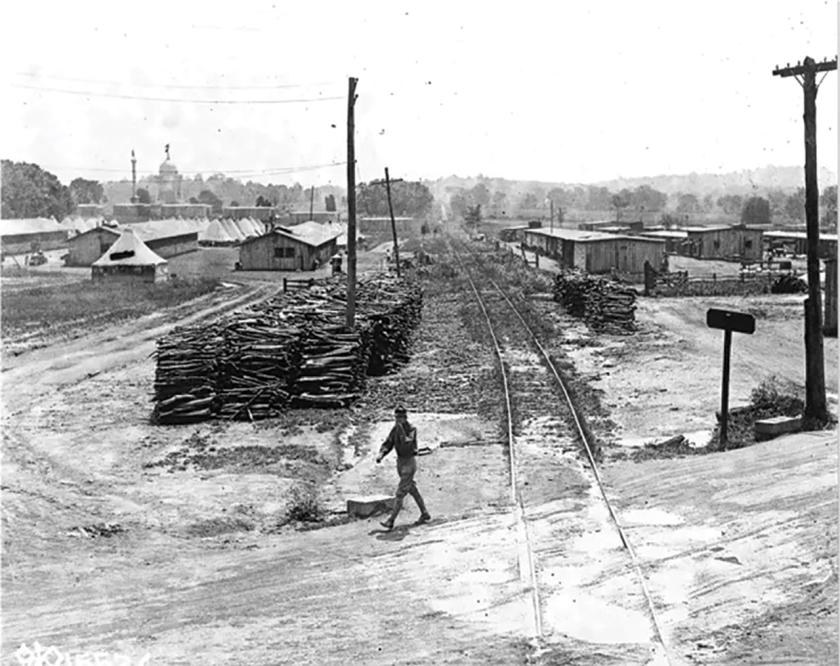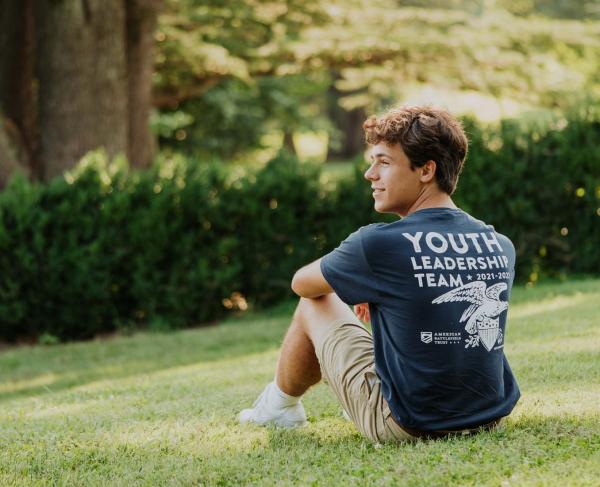From Gettysburg to the Western Front and Back Again

Maj. Dwight D. Eisenhower, commander of the Tank Training Corps–Camp Colt. He’s standing beside a Renault light tank.
In 1918, while the future Allied leaders of World War II like George Patton, Charles de Gaulle, Douglas MacArthur and Winston Churchill engaged in combat on the Western Front, Dwight D. Eisenhower was enduring a trial by fire of his own on the old battleground of Gettysburg.
Ike was at war with a different type of foe: the influenza pandemic ravaging the world. The 27-year-old Eisenhower was in charge of Camp Colt, a training facility for the newly created Tank Corps, making use of the site that played host to the 1913 Gettysburg Reunion. What the camp lacked in actual tanks — it never had more than two — it made up for in the training and leadership displayed by Maj. (later Lt. Col.) Eisenhower.
In a September 1918 troop transfer, soldiers from Camp Devens, Massachusetts, arrived at Camp Colt, carrying the flu virus along with their rucksacks. Although first misdiagnosed as a reaction to a typhoid fever inoculation, the virus soon proved a serious dilemma to Eisenhower. By mid-October, nearly one-third of the troops present were diagnosed with the flu. Eisenhower, in coordination with the U.S. Army and Gettysburg town leaders, quarantined the camp. Ike ordered that all facilities be cleaned with disinfectants daily. At first, he asked local merchants to allow only up to four soldiers at a time into their stores. Later, Ike forbade soldiers from entering the town even for church services, and he also forbade town citizens from entering the camp.

The town acted, too. The population helped maintain the strict quarantine and even went as far as to cancel the annual Halloween parade. Eisenhower had the worst cases transferred off base for further isolation in Xavier Hall, which was offered for use to Eisenhower by the congregation of St. Francis Xavier Church. St. Francis Xavier Church had also housed wounded soldiers from the Battle of Gettysburg 55 years prior.
On October 24, the crisis had nearly passed, with only “one death in the past 24 hours,” and only six new cases in the camp. By the first week of November, around 150 soldiers in Camp Colt had succumbed to the virus, and Eisenhower received his orders to ship out to Europe on November 18, 1918 — orders that were later rescinded when the armistice was signed on November 11, 1918.
Although dejected that he did not see combat in World War I, Ike nonetheless displayed the leadership qualities that would propel him to become the Supreme Commander of the Allied Expeditionary Force (SCAEF) during World War II, and later propel him to the White House. He was awarded the Distinguished Service Medal by the army for the exemplary leadership displayed at Camp Colt, particularly during the virus outbreak.
His skillful handling of the situation is clear when the crisis at Camp Colt is compared to what occurred at other United States training camps. At Camps Forrest, Oglethorpe, Hancock and Grant, soldiers died by the hundreds.
Camp Grant, located near Rockford, Illinois, and named for Gen. Ulysses S. Grant, was hit particularly hard. The virus spread quickly among the men of the 86th “Blackhawk” Division, and although quarantine procedures were undertaken, it was too late. In a week, twice as many men died as at Camp Colt. Among the virus’s victims was the commanding officer of the post, Col. Charles B. Hagadorn — who, overcome with grief and distraught by the toll the virus was taking on his men — took his own life with his Colt revolver.
Camp Colt closed in November 1919, but Gettysburg, site of Ike’s first command, left an indelible mark on the future president. It was there he chose to retire when his military career came to an end, and there he returned after his presidential administration.
Related Battles
23,049
28,063


